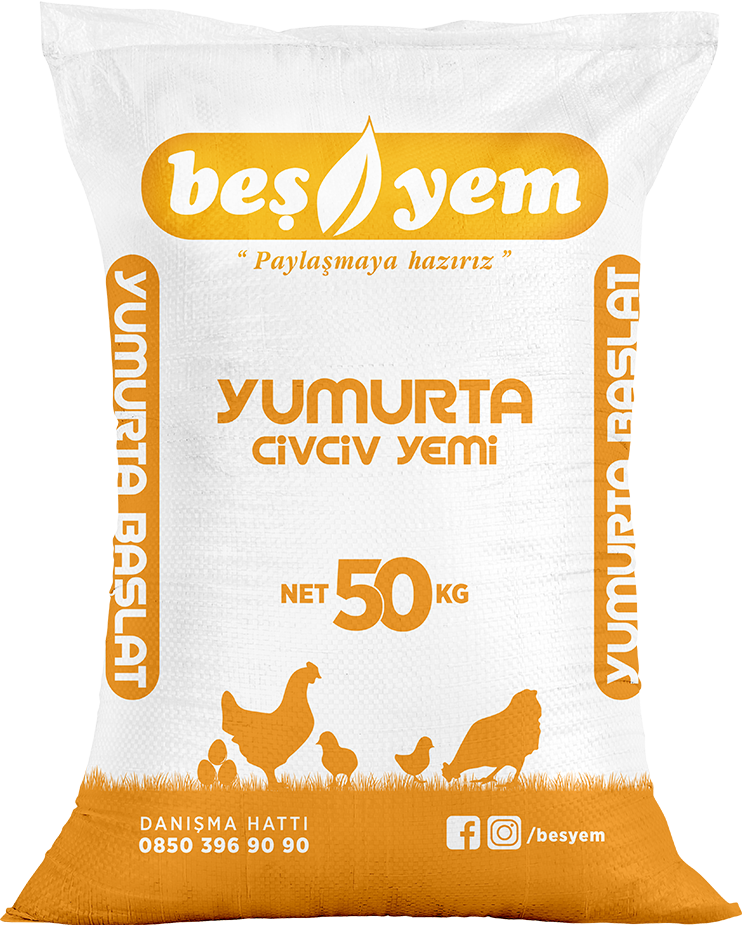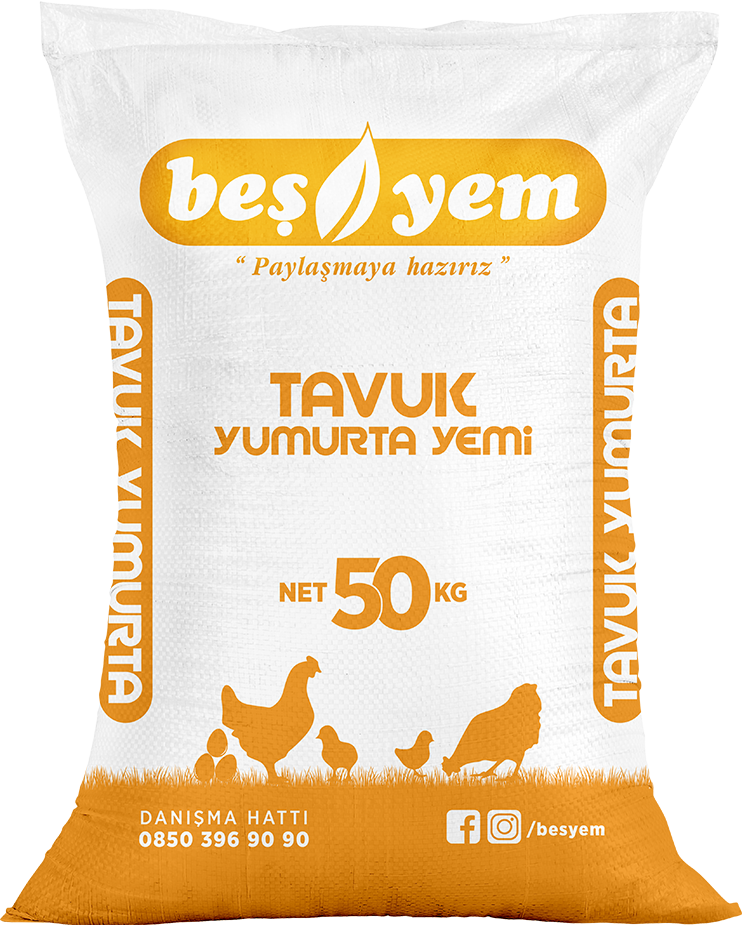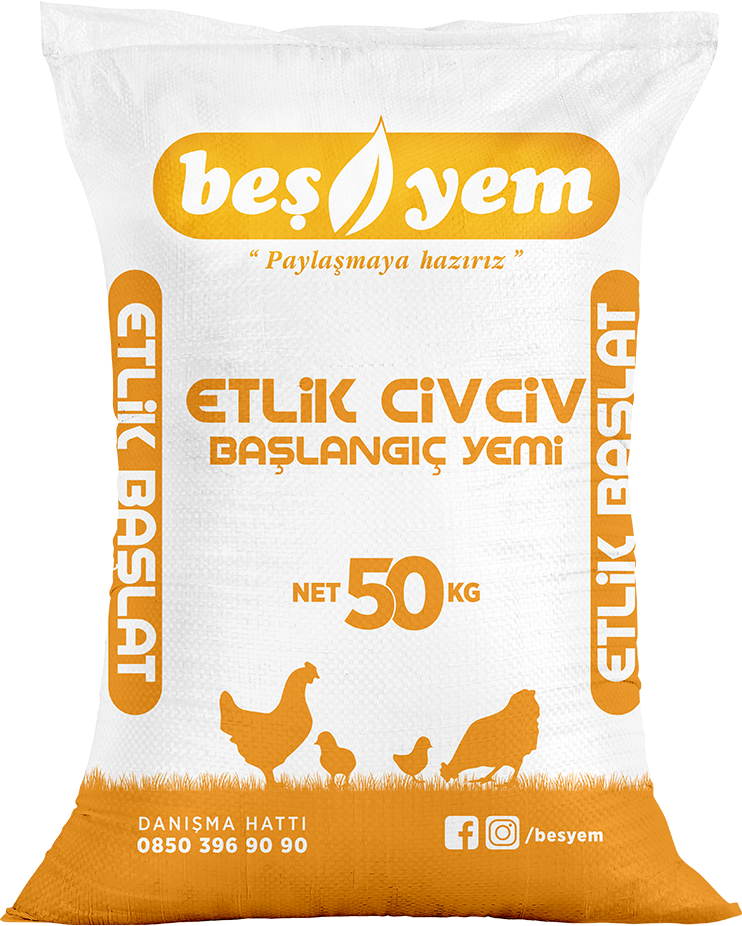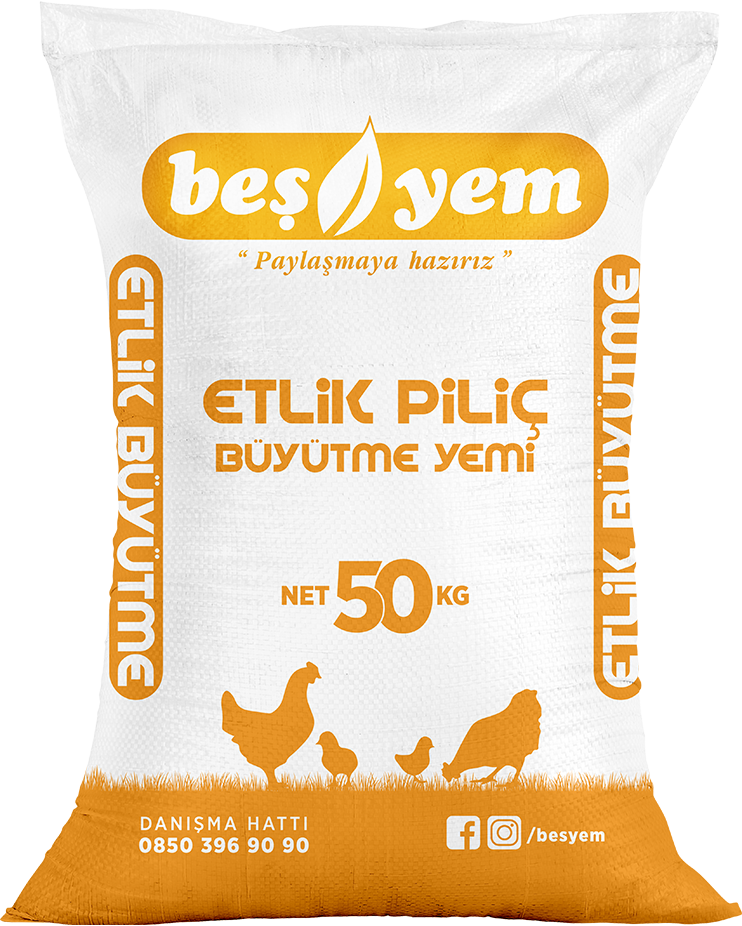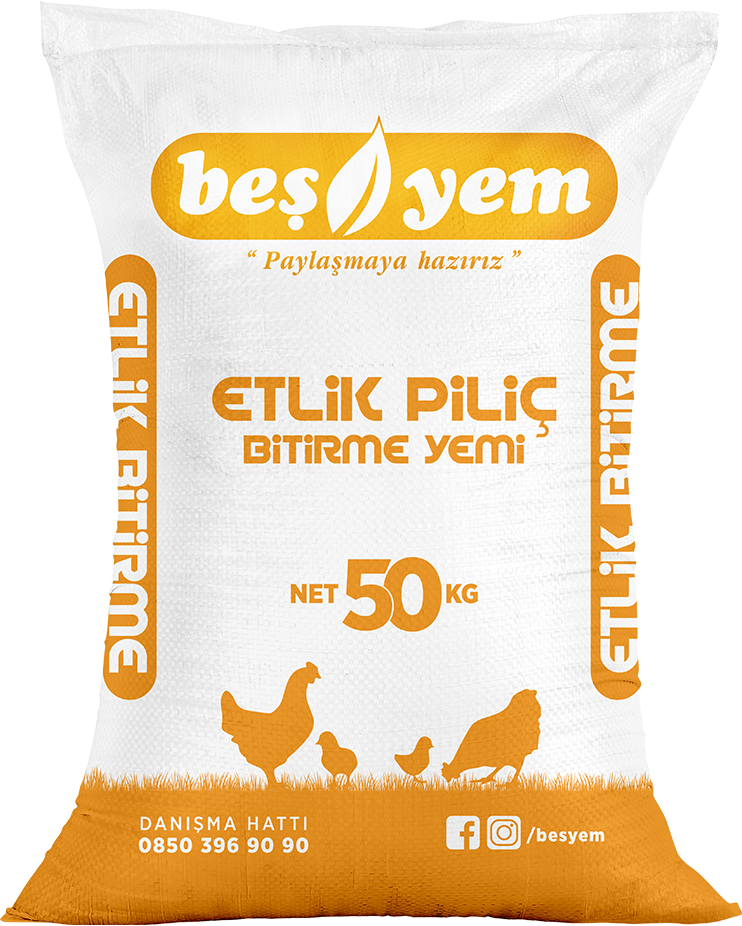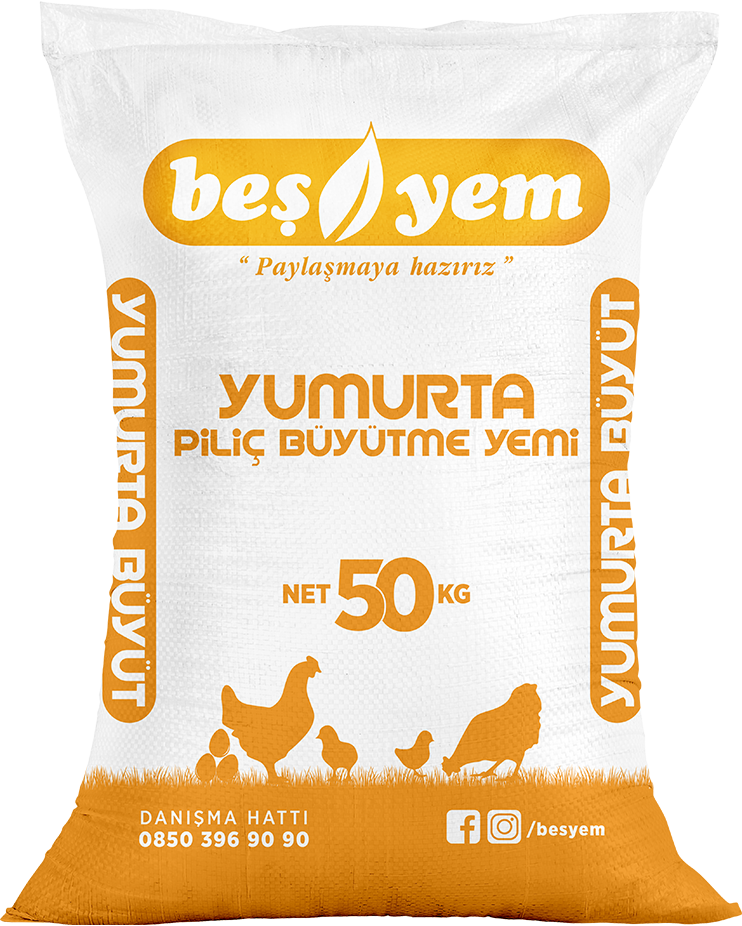
Layer Grower Feed
Feed for Poultry
Net: 50kg
Since this is the final stage of production, it is important to handle pullets with care during catching, loading between the broiler house and the transport vehicle, during transportation, and at the slaughterhouse. Such care will provide significant benefits in terms of poultry quality both at the sales stage and for consumption. The production of high-yield, good-quality carcasses depends on the effective integration of rearing, catching, and slaughtering processes.
Usage
After ensuring that pullets have reached the target weight at the end of the 6th week, this feed is used for their nutrition starting from the first day of the 7th week.
Depending on the rearing methods, it can be fed up to the 16th week during the pullet period.
Nutrition during this stage enables pullets to reach sexual maturity on time and ensures that they achieve target performance levels during the laying period.
To help our customers obtain high performance, Beşyem Layer Grower Feed is formulated based on the catalog values of each breed.
Why Layer Grower Feed?
Animals should be at the desired target body weight according to their age. For this reason, starting from the 6th week, they should be weighed to decide on the transition to the next feed.
If pullets are below the target values, layer chick feed can be continued until the 7th or 8th week.
If they are close to the target values, they can be switched to grower feed.
The transition from chick feed to layer grower feed should be made in accordance with the instructions of the parent stock company to which the chicks belong.
This transition must be done gradually over one week by mixing the old and new feed.
Otherwise, sudden feed changes cause stress in pullets. From the 6th week onwards, animals should be weighed at least once a week and the results recorded. Avoid carrying out vaccinations and feed changes at the same time. It is desirable that at least 80% of the flock has the same body weight (uniformity). During this period, the higher the feed quality and management practices applied, the better the peak production will be in the laying period.
A flock with low uniformity cannot reach peak performance.
Have you checked out the other products?
Our website uses cookies to improve your experience. OK


